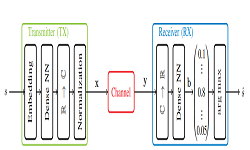What is Machine Learning, why machine learning advancing so rapidly? How to learn it?
Machine learning is the science of getting computers to act without being explicitly programmed.
In the past decade, machine learning has given us self-driving cars, practical speech recognition, effective web search, and a vastly improved understanding of the human genome. Machine learning is so pervasive today that you probably use it dozens of times a day without knowing it. Like Facebook’s News Feed, for example, uses machine learning to personalize each member’s feed. If a member frequently stops scrolling to read or “like” a particular friend’s posts, the News Feed will start to show more of that friend’s activity earlier in the feed. Behind the scenes, the software is simply using statistical analysis and predictive analytics to identify patterns in the user’s data and use those patterns to populate the News Feed. Should the member no longer stop to read, like or comment on the friend’s posts, that new data will be included in the data set and the News Feed will adjust accordingly.
Artificial intelligence, machine learning, and deep learning are often used interchangeably, but they’re not the same. In a nutshell, AI is the broader concept of machines that can act intelligently. Machine learning and deep learning are sub-sets of AI based on the idea that given access to large volumes of data, machines can learn for themselves.
Machine learning tasks categories:
Machine learning tasks are typically classified into three broad categories, depending on the nature of the learning “signal” or “feedback” available to a learning system. These are
Supervised learning: The computer is presented with example inputs and their desired outputs, given by a “teacher”, and the goal is to learn a general rule that maps inputs to outputs.
Unsupervised learning: No labels are given to the learning algorithm, leaving it on its own to find structure in its input. Unsupervised learning can be a goal in itself (discovering hidden patterns in data) or a means towards an end (feature learning).
Reinforcement learning: A computer program interacts with a dynamic environment in which it must perform a certain goal (such as driving a vehicle or playing a game against an opponent. The program is provided feedback in terms of rewards and punishments as it navigates its problem space.
Why is machine learning advancing so rapidly?
Machine learning is not a new concept, but it has recently gained fresh momentum. Why? Processing power and storage are now more affordable than ever, and the explosion of Big Data from various sources – such as text, images, and IoT devices – is making it easier for machines to “train” and learn.
Machine Learning Resources:
Video
Video is a very popular way to get started in machine learning.
Stanford Machine Learning: Available via Coursera and taught by Andrew Ng. In addition to enrolling, you can watch all the lectures anytime and get the handouts and lecture notes from the actual Stanford CS229 course. The course includes homework and quizzes and focuses on linear algebra and using Octave.
Caltech Learning from Data: Available via edX and taught by Yaser Abu-Mostafa. All the lectures and materials are available on the CalTech site. Again, like the Stanford class, you can take it at your own pace and complete the homework and assignments. It covers similar subjects and goes into a little bit more details and is more mathematical.
Machine Learning Category on VideoLectures.Net: This is an easy place to drown in the overload of content. Look for videos that seem interesting and try them out.
“Getting In Shape For The Sport Of Data Science” – Talk by Jeremy Howard: A talk to a local R users group on the practical process for doing well in competitive machine learning.
You may consider to enhance your knowledge taking the Data Science Online Course
Papers
There are some papers that you might find interesting if you are looking to get started in machine learning
The Discipline of Machine Learning: A white paper defining the discipline of Machine Learning by Tom Mitchell.
A Few Useful Things to Know about Machine Learning: This is a great paper because it pulls back from specific algorithms and motivates a number of important issues such as feature selection generalizability and model simplicity. This is all good stuff to get right and think clearly about from the beginning.



